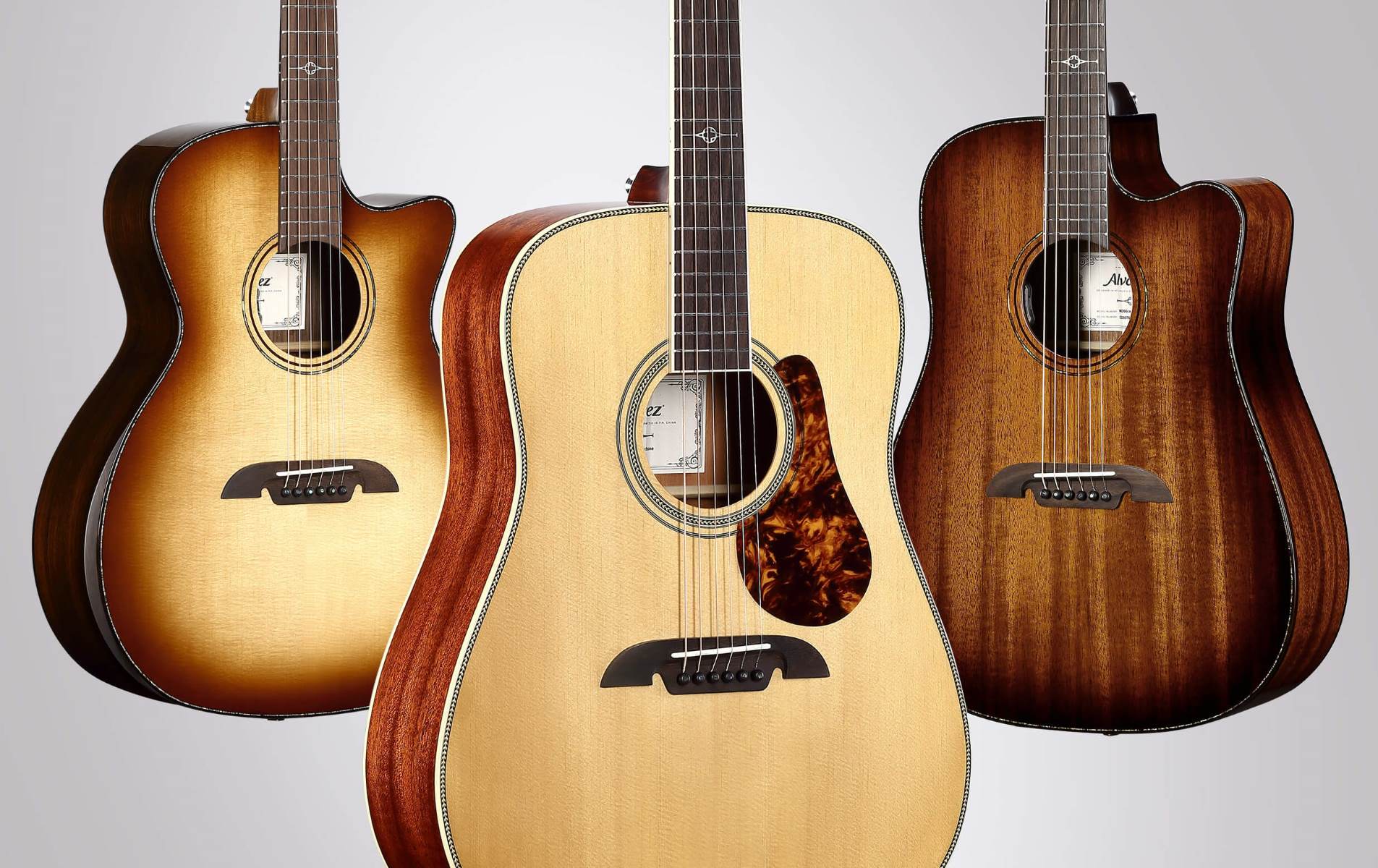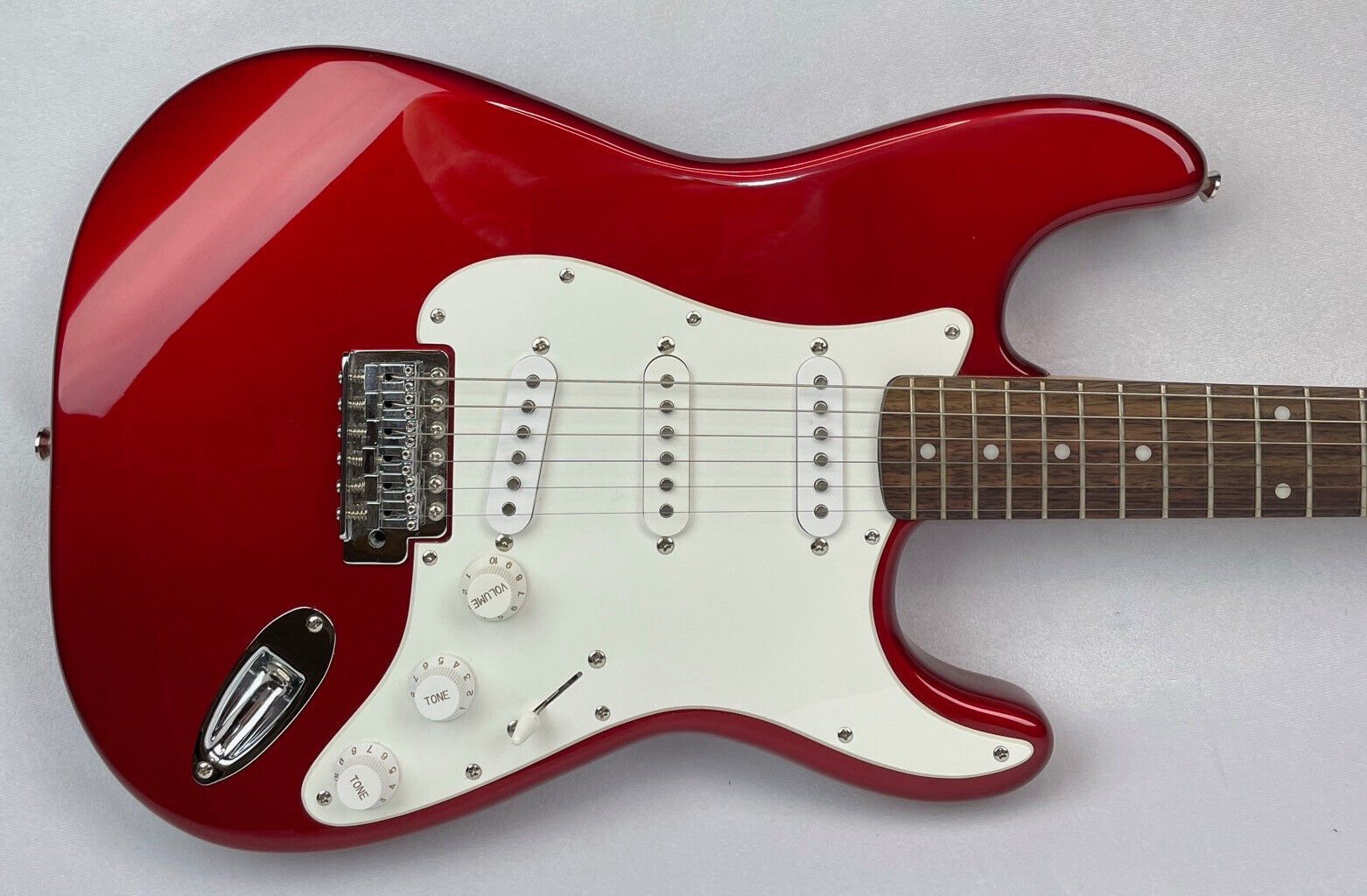Home>Instruments>Guitar>What Is A Guitar Riff


Guitar
What Is A Guitar Riff
Published: February 15, 2024
Learn what a guitar riff is and how to create your own with our comprehensive guide. Master the art of playing guitar riffs and elevate your music skills today!
(Many of the links in this article redirect to a specific reviewed product. Your purchase of these products through affiliate links helps to generate commission for AudioLover.com, at no extra cost. Learn more)
Table of Contents
Introduction
Welcome to the world of guitar riffs, where the magic of music comes alive through the strings of a guitar. A guitar riff is more than just a series of notes; it's a powerful, captivating element that defines the essence of a song. Whether it's the iconic opening of a rock anthem or the soul-stirring melody of a blues classic, guitar riffs have the ability to transport listeners to a realm of pure musical ecstasy.
The art of crafting a mesmerizing guitar riff is a skill that has been mastered by legendary musicians throughout history. From the electrifying sounds of rock 'n' roll to the soulful tunes of blues and the rhythmic patterns of funk and jazz, guitar riffs span across genres, leaving an indelible mark on the world of music.
In this article, we will delve into the captivating world of guitar riffs, exploring their definition, historical significance, and their enduring impact on popular music. We will also uncover the techniques used to create these melodic masterpieces, providing insight into the artistry and creativity that goes into crafting a memorable guitar riff. So, grab your air guitar and get ready to embark on a melodious journey through the realm of guitar riffs.
Definition of a Guitar Riff
At its core, a guitar riff is a repeated sequence of notes, chords, or musical phrases that forms the foundation of a song. It serves as a memorable and distinctive musical motif that not only hooks the listener’s ear but also sets the tone and mood of the composition. A well-crafted guitar riff has the power to instantly captivate an audience and become synonymous with the song it represents.
Unlike a guitar solo, which typically features intricate and improvised melodies, a riff is a structured and recurring musical phrase that anchors a song. It often serves as the driving force behind the rhythm section, providing a catchy and recognizable melody that complements the vocals and other instrumental elements.
One of the defining characteristics of a guitar riff is its ability to create a sense of anticipation and excitement within the listener. Whether it’s the infectious opening riff of a classic rock anthem or the soulful groove of a blues riff, these melodic fragments have the remarkable ability to evoke emotions and transport the audience into the heart of the music.
Moreover, guitar riffs are not limited to a specific genre or style of music. They can be found in rock, blues, funk, jazz, metal, and virtually every other musical genre, showcasing their versatility and universal appeal. Regardless of the musical context, a well-crafted guitar riff possesses the innate ability to leave an indelible mark on the listener’s memory, often becoming the defining feature of a song.
As we journey deeper into the realm of guitar riffs, we will unravel the historical significance of these melodic gems and explore their enduring impact on the world of music.
History of Guitar Riffs
The history of guitar riffs is deeply intertwined with the evolution of popular music, tracing its roots back to the early days of blues, jazz, and rock ‘n’ roll. The emergence of electrified instruments and amplification in the 20th century played a pivotal role in shaping the sound of guitar riffs, allowing musicians to explore new sonic territories and push the boundaries of musical expression.
One of the earliest incarnations of the guitar riff can be found in the blues music of the early 20th century. Pioneering blues artists such as Robert Johnson, Muddy Waters, and T-Bone Walker crafted soul-stirring riffs that laid the groundwork for the future of guitar-driven music. These early blues riffs, characterized by their raw emotion and expressive phrasing, served as a source of inspiration for generations of musicians to come.
As the blues migrated into the realm of rock ‘n’ roll in the 1950s, the guitar riff took on a new level of prominence, becoming a defining feature of the genre. Icons like Chuck Berry, Bo Diddley, and Link Wray pioneered the use of catchy, infectious riffs that became the cornerstone of rock ‘n’ roll music. Their innovative approach to guitar playing set the stage for the explosive growth of the genre and cemented the guitar riff as a fundamental element of rock music.
The 1960s and 1970s witnessed a seismic shift in the world of guitar riffs, as the emergence of bands like The Beatles, The Rolling Stones, Led Zeppelin, and Black Sabbath ushered in a new era of sonic experimentation and virtuosic riff crafting. These iconic bands pushed the boundaries of what could be achieved with a guitar, introducing complex and innovative riffs that redefined the landscape of popular music.
Fast forward to the present day, and the legacy of guitar riffs continues to thrive in the realms of rock, metal, blues, funk, and beyond. Modern guitarists and bands draw inspiration from the rich tapestry of riff-driven music that has come before, infusing their own unique style and creativity into the ever-evolving tradition of guitar riff composition.
As we reflect on the history of guitar riffs, it becomes evident that these melodic fragments have not only shaped the course of musical history but have also become an enduring symbol of artistic expression and innovation.
Importance of Guitar Riffs in Music
The significance of guitar riffs in music extends far beyond their role as mere musical embellishments. These melodic fragments serve as the backbone of countless iconic songs, infusing them with a sense of identity, energy, and memorability. Whether it’s the infectious opening riff of “Smoke on the Water” by Deep Purple or the timeless groove of “Sunshine of Your Love” by Cream, guitar riffs have left an indelible mark on the landscape of popular music.
One of the primary roles of a guitar riff is to establish a sonic identity for a song. A well-crafted riff has the power to instantly grab the listener’s attention and create a lasting impression. It serves as a musical hook that draws the audience into the heart of the composition, setting the stage for the lyrical narrative and instrumental dynamics that unfold throughout the song.
Moreover, guitar riffs play a crucial role in shaping the overall mood and atmosphere of a song. Whether it’s conveying a sense of raw aggression and power in hard rock and metal or evoking a laid-back, bluesy vibe in classic rock and blues, riffs have the ability to imbue a composition with a distinct emotional character. They serve as a sonic palette from which musicians can paint a rich tapestry of musical expression.
Beyond their impact on individual songs, guitar riffs have contributed to the evolution of entire musical genres. From the revolutionary riffs of Jimi Hendrix that redefined the possibilities of electric guitar to the thunderous power chords of heavy metal, these melodic fragments have shaped the sonic landscape of popular music, inspiring generations of musicians to push the boundaries of creativity and innovation.
Furthermore, guitar riffs have played a pivotal role in shaping the cultural and social fabric of society. They have become anthems that resonate with audiences across generations, serving as a common thread that unites music lovers from diverse backgrounds. The enduring popularity of iconic riffs has transcended the confines of time and space, solidifying their status as timeless symbols of musical excellence.
As we celebrate the importance of guitar riffs in music, it becomes evident that these melodic gems are not just musical motifs; they are pillars of artistic expression that have left an indelible imprint on the fabric of popular culture.
Notable Guitar Riffs in Popular Music
The annals of popular music are adorned with an array of iconic guitar riffs that have etched themselves into the collective consciousness of music enthusiasts worldwide. These melodic fragments, crafted by virtuoso guitarists, have become synonymous with the songs they represent, transcending the boundaries of time and leaving an enduring legacy in the realm of popular music.
One of the most recognizable guitar riffs in rock history is the opening sequence of “Smoke on the Water” by Deep Purple. Composed of simple yet powerful power chords, this riff has become a rite of passage for aspiring guitarists and a timeless anthem for rock aficionados. Its infectious melody and driving rhythm have solidified its status as a quintessential rock riff.
Another legendary riff that has stood the test of time is the opening motif of “Whole Lotta Love” by Led Zeppelin. Crafted by the incomparable Jimmy Page, this riff exudes a raw, primal energy that encapsulates the essence of classic rock ‘n’ roll. Its hypnotic groove and electrifying presence have cemented its place as a cornerstone of rock music history.
Shifting gears to the realm of blues, the opening riff of “Sweet Home Chicago” stands as a testament to the enduring power of blues guitar. Penned by blues legend Robert Johnson, this timeless riff embodies the soulful essence of the blues, captivating listeners with its emotive phrasing and evocative tonality. It serves as a poignant reminder of the profound influence of blues guitar on the fabric of popular music.
Furthermore, the realm of heavy metal boasts its own arsenal of iconic riffs, with “Iron Man” by Black Sabbath standing as a towering exemplar. Crafted by the legendary Tony Iommi, this riff emanates a brooding, ominous aura that has become synonymous with the sonic aesthetic of heavy metal. Its colossal presence and thunderous resonance have solidified its status as a defining moment in the history of metal guitar.
These are but a few examples of the countless guitar riffs that have left an indelible mark on popular music. From the blues-infused melodies of Eric Clapton to the virtuosic compositions of Jimi Hendrix, the world of guitar riffs is a treasure trove of musical excellence, each riff telling a story of innovation, creativity, and enduring impact.
Techniques for Creating Guitar Riffs
The art of crafting captivating guitar riffs encompasses a diverse array of techniques and approaches, each contributing to the rich tapestry of musical expression. Whether drawing from the blues tradition, embracing the ethos of rock ‘n’ roll, or venturing into the realms of funk and metal, guitarists employ a myriad of methods to breathe life into their melodic creations.
One fundamental technique for creating guitar riffs is the use of power chords, a staple of rock and punk music. By utilizing the root note and the fifth of a chord, power chords exude a raw, aggressive energy that forms the backbone of countless iconic riffs. The simplicity and potency of power chords make them an indispensable tool for crafting hard-hitting, memorable melodies.
Another approach to riff creation involves the use of palm muting, a technique that involves resting the edge of the picking hand on the strings near the bridge of the guitar. This imparts a percussive, muted quality to the notes, adding a rhythmic dynamism to the riff. Palm muting is often employed in metal and hard rock riffs to achieve a chugging, staccato effect that drives the song forward with relentless power.
Furthermore, the incorporation of melodic intervals and arpeggios can lend a sense of sophistication and nuance to a guitar riff. By weaving together intricate patterns of notes and leveraging the full range of the fretboard, guitarists can create riffs that transcend conventional boundaries, infusing the composition with a rich harmonic tapestry and melodic depth.
Exploring alternate tunings is yet another avenue for innovation in riff crafting. By deviating from standard tuning and experimenting with alternative tunings such as open D or drop C, guitarists can unlock new sonic possibilities and unearth fresh melodic textures. This approach has been embraced by artists across genres, from blues and folk to progressive rock and metal, yielding an eclectic spectrum of riff-driven compositions.
Moreover, the utilization of effects pedals and signal processing techniques can imbue guitar riffs with a kaleidoscope of tonal colors and sonic textures. From the searing distortion of overdrive and fuzz pedals to the ethereal ambiance of delay and reverb, the sonic palette available to guitarists enables them to sculpt riffs that traverse the realms of the familiar and the avant-garde.
As we traverse the diverse landscape of guitar riff creation, it becomes evident that the artistry of riff crafting knows no bounds. It is a testament to the boundless creativity and innovation that define the world of guitar playing, showcasing the enduring allure of the six-string instrument as a vessel for musical expression.
Conclusion
In the intricate tapestry of musical expression, guitar riffs stand as vibrant threads that weave together the essence of popular music. From the soul-stirring refrains of blues to the thunderous power chords of heavy metal, guitar riffs have left an indelible mark on the sonic landscape, shaping the cultural and artistic fabric of society.
As we reflect on the journey through the world of guitar riffs, it becomes evident that these melodic fragments are more than just musical motifs; they are portals to a realm of emotion, innovation, and enduring impact. The history of guitar riffs is a testament to the transformative power of music, transcending boundaries of genre and generation to resonate with audiences across the globe.
Moreover, the techniques employed in crafting guitar riffs serve as a testament to the boundless creativity and innovation that define the world of guitar playing. From the thunderous resonance of power chords to the nuanced intricacies of melodic intervals, guitarists continue to push the boundaries of riff creation, infusing their compositions with a kaleidoscope of sonic textures and tonal colors.
As we bid adieu to this melodic odyssey, let us carry with us an appreciation for the artistry and craftsmanship that underpin the world of guitar riffs. They are not just musical fragments; they are timeless symbols of artistic expression and innovation, resonating with the hearts and souls of music enthusiasts across the ages.
So, the next time you find yourself tapping your foot to the infectious groove of a guitar riff or air-guitaring to the anthems of rock and roll, take a moment to appreciate the profound impact of these melodic masterpieces. For in the realm of guitar riffs, the magic of music comes alive, transcending the confines of time and space to unite us in a symphony of sonic splendor.











